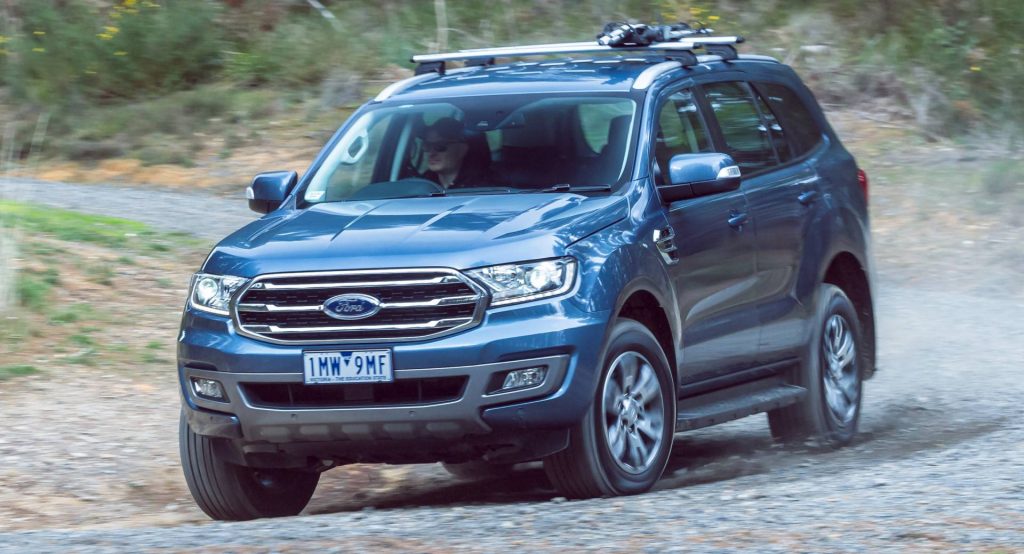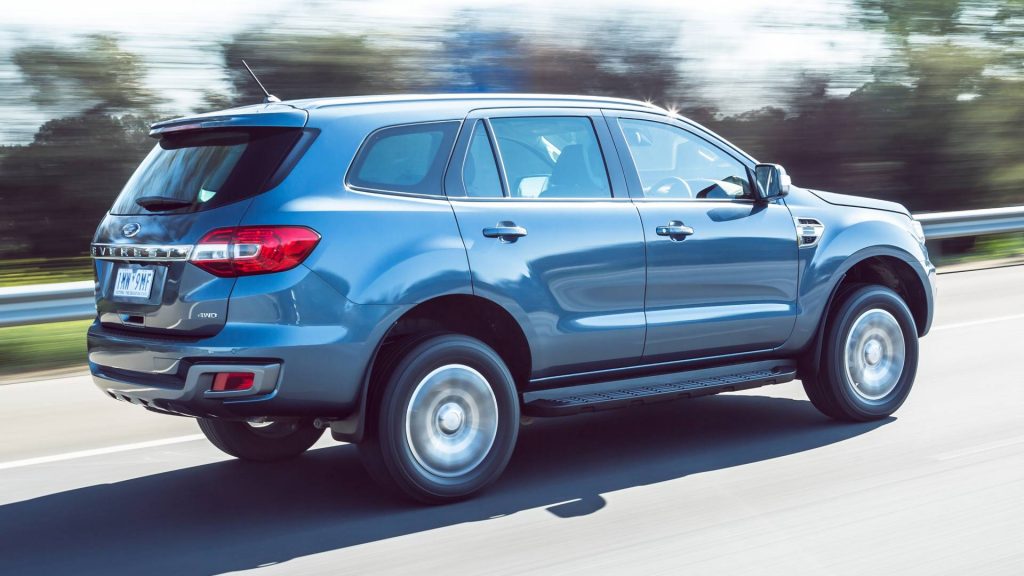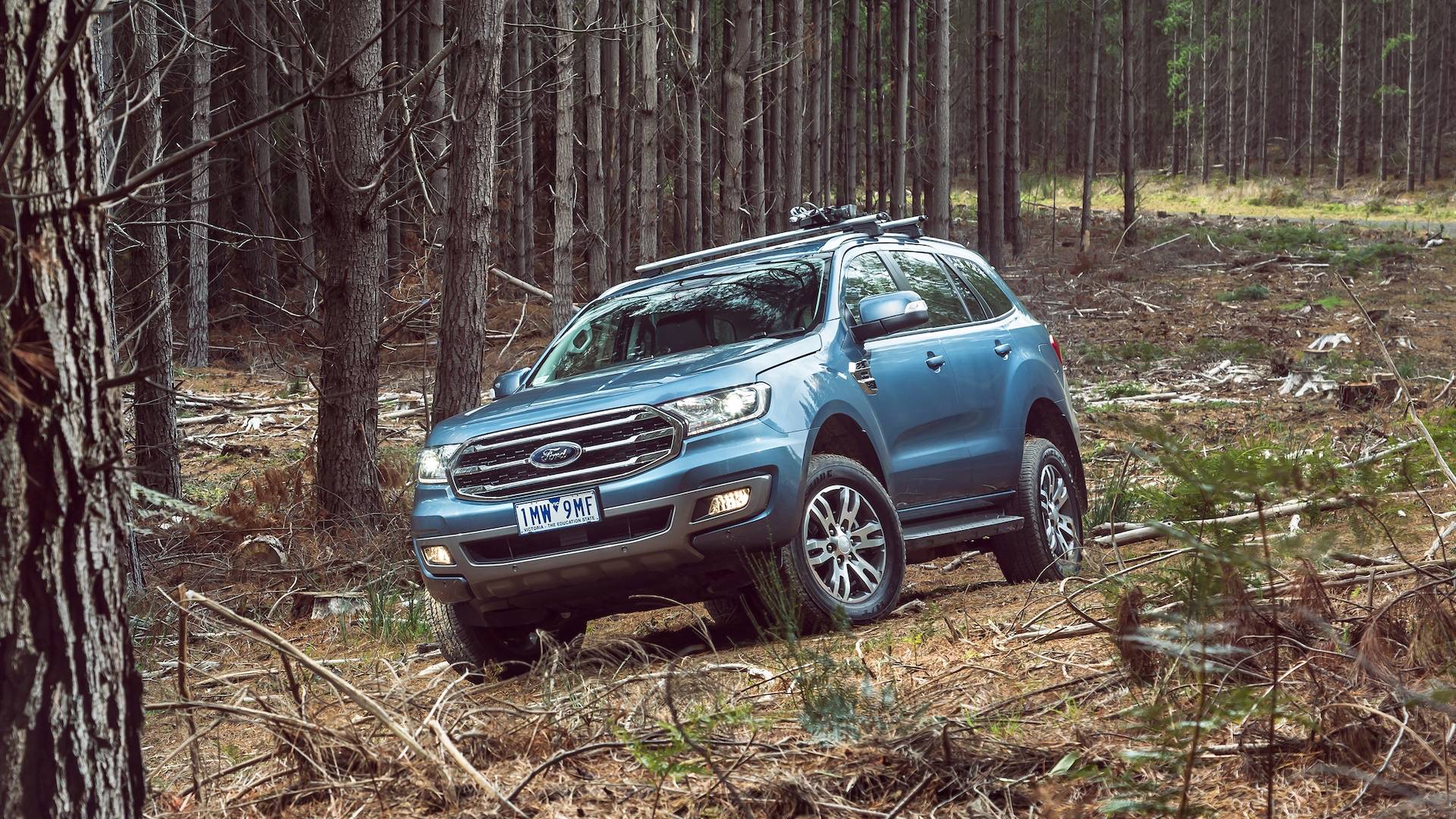Ford has given its rugged Everest SUV a comprehensive safety update in Australia.
From now on, all trim levels of the Ranger-based utility vehicle feature Autonomous Emergency Braking (AEB) with Pedestrian Detection. All Everest models built from May 2019 onwards feature the driver assistance system as standard, and Ford has also expanded the availability of other, similar technologies across the range.
Previously reserved for the more expensive Trend and Titanium models, Lane Keeping Aid with Driver Alert System, Traffic Sign Recognition, and Automatic High Beam are now standard on the entry-level Ambiente grade as well.
Also Read: Ford Exec Reveals An Everest Raptor Could Very Well Materialize In The Future
These new systems add to the existing Rear View Camera, Rear Parking Sensors, Cruise Control with adjustable speed limiter, Emergency Assistance, and Dynamic Stability Control (DSC). The latter incorporates ABS, Load Adaptive Control, Roll Over Mitigation, Traction Control, and Trailer Sway Control while AWD models also get Hill Descent Control, Hill Launch Assist, and an E-locking Rear Differential.
Ford continues to offer Australian customers the choice of two diesel powertrains: a standard 3.2-liter TDCi Duratorq five-cylinder rated at 192 hp (195 PS) and 470 Nm (347 lb-ft) of torque and an optional (standard on the Titanium) 2.0-liter TDCi Bi-Turbo four-cylinder unit that makes 210 hp (213 PS) and 500 Nm (369 lb-ft) of torque.
The five-cylinder comes with a 6-speed automatic transmission while the four-cylinder (shared with the Ranger Raptor) is linked to a 10-speed auto.
The updated Everest is already in Australian Ford dealerships with a starting price of AU$49,490 (approximately $34,800) for the base RWD, five-seat Ambiente grade.










